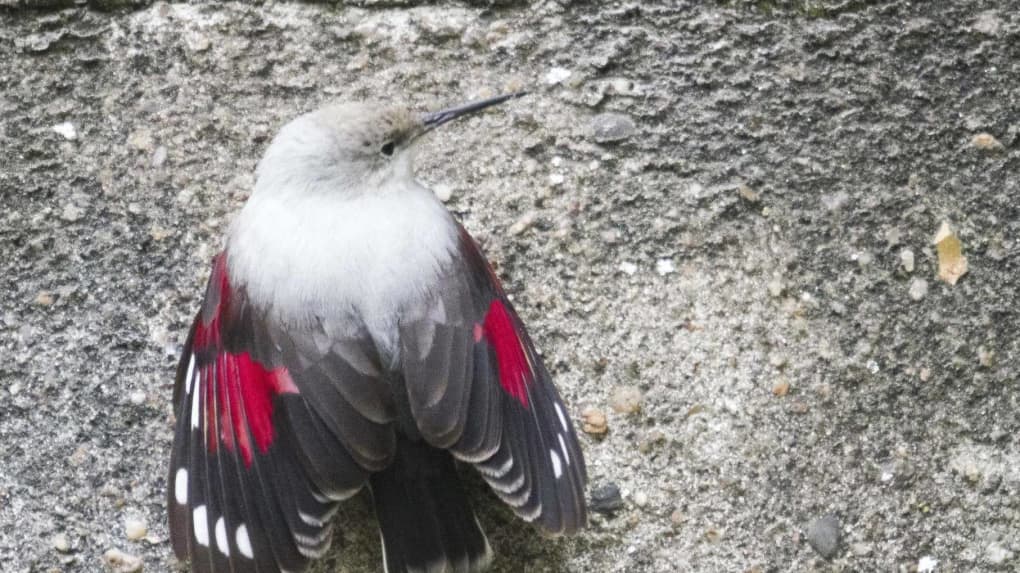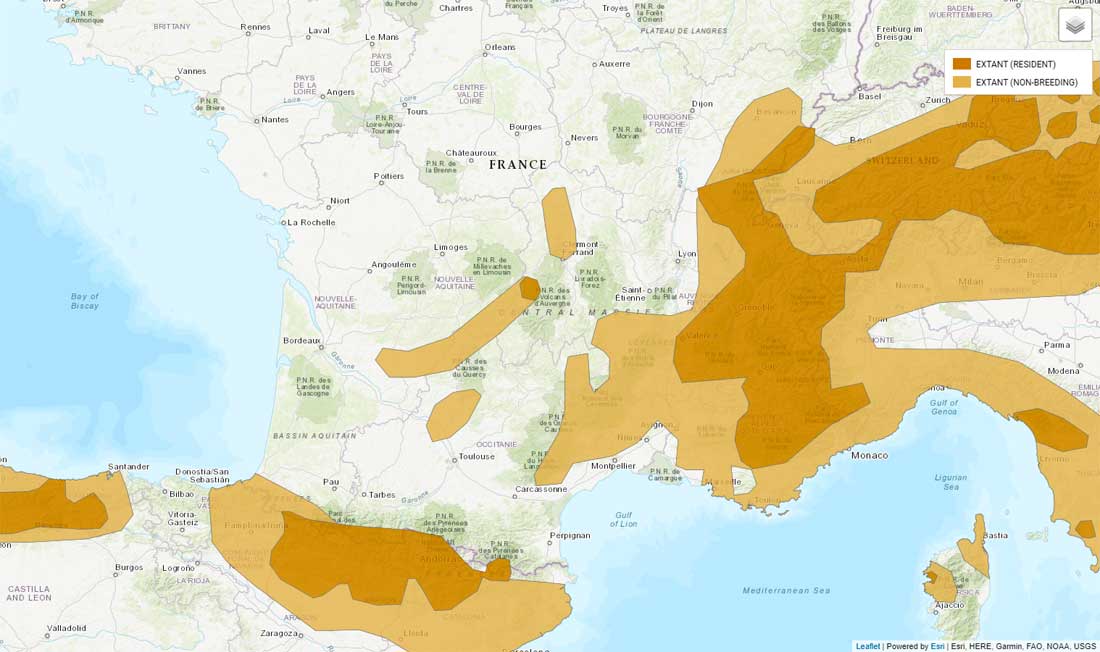The Wallcreeper (Tichodroma muraria) is the only extant member of both the genus Tichodroma and the family Tichodromidae that is found throughout the high mountains of Eurasia and they are not related to the Tree creepers, albeit that behave in a similar manner..
In France, the Alpine and Pyrenean mountains are home to the largest breeding populations. The Jura massif is home to a few dozen couples. They are absent from the Vosges and there are only a few cases of reproduction in the Massif Central.
They are a small, (15.5–17 cm), bird with plumage that is primarily blue-grey, with darker flight and tail feathers with extraordinary crimson wings that can only really be seen in flight. It’s these wings and its fluttering flight that give it the nickname of the Butterfly bird in France.
Nests are usually constructed in the mountains at between 1,000 and 3,000 metres however lower altitude nests do occur, (500 metres in the Jura). The nest is almost always built in a crack or crevice but several cases of nesting in buildings have been reported, sometimes simply on a beam in a barn. The nest is constructed by the female alone. She transports all the materials; mosses, lichens, stems, animal fur and feathers, however she is accompanied by the male, who it seems simply keeps watch and sings. Of course this behaviour may be to defend and distract from both the female and the nest site.
Eggs, 3 – 5, are mainly laid in May and both sexes participate in feeding the young. Very soon after the young birds have fledged the parents push them out of their territory.
Diet is not fully understood but is principally comprised of small insects that they can seek out in cracks or from the surface of the rock or stone faces using their long pointed beak. Seeking food is generally practiced by making more or less vertical climbs, then dropping back down and starting again close by.
In winter there can be an altitudinal migration, especially when food is hard to find. They leave the high altitudes and descend to the lower cliff faces in the valleys and may form small flocks. In some cases individuals will travel huge distances, even as far as the north of France where they will spend the winter on large buildings, cathedrals, fortresses, castles, châteaux or quarries where they can find suitable food on the walls or rock faces. In these locations they are far more relaxed with humans than when in the mountains providing people with a perfect opportunity to watch with ease.
The French population is difficult to estimate and historically there has probably been a tendency to underestimate. Recent estimations put the situation in France at between 4,000 and 20,000 couples which isn’t exactly informative.
Largely protected in their mountain home they experience few threats from human activity other than perhaps the increase in recreational activities. Little natural predation except from birds of prey.



